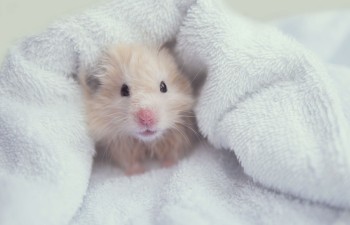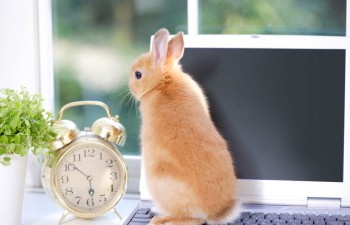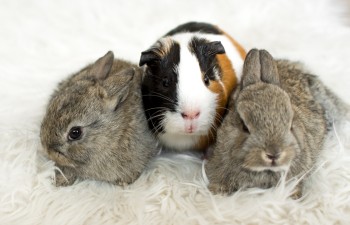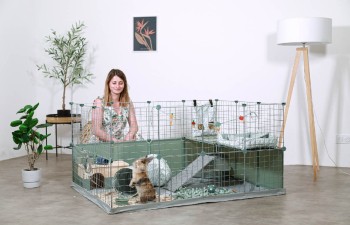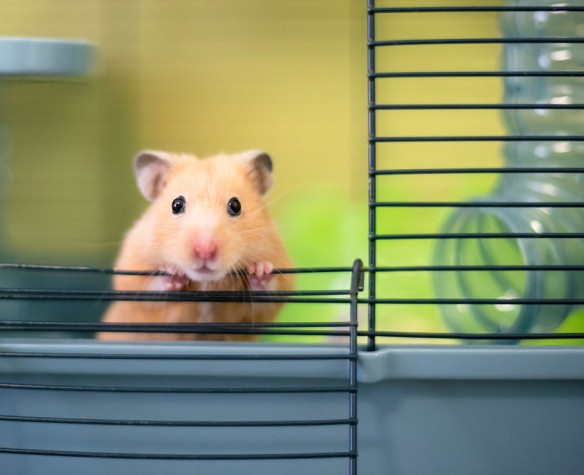
Hamster and guinea pig habitat, nutrition and toys
1- Hamsters
Cage
Here are the ideal dimensions for a hamster cage: 60 cm long x 30 cm wide x 40 cm high. Care should also be taken to ensure that the width between the bars is suitable for small rodents otherwise the hamsters could escape.
Preferred accessories
A water bottle (plastic bottle with a long metal pipette) is essential as water bowls are unsuitable.
The best type of litter consists of: a layer of wood shavings topped with a layer of plant-based litter (flax or hemp litter, for example). Untreated sawdust is also a good solution. Hamsters like to have a small house to hide in.
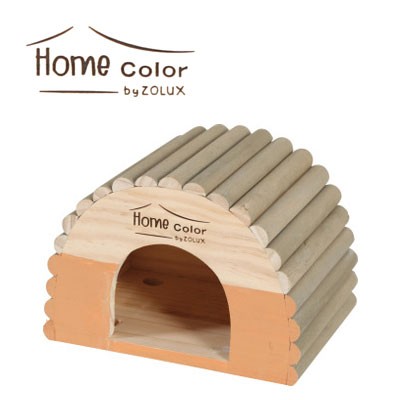
Nutrition
Hamsters are omnivores. Hamster feed consists of granules or mixes specially for hamsters. They can also be given a few fresh or dried fruit and vegetables, avoiding produce with a high sugar content. A few mealworms can be added for protein, for example.
Pay attention to quantities when feeding hamsters: they are small animals (100-200 g) which can easily become obese if fed too many calories (sugar or fat).
Guinea pigs

Cage
This should be at least: 100 cm long x 50 cm wide x 40 cm high. These rodents appreciate having a shelf in their cage.
Preferred accessories
Water bottles are also essential for guinea pigs.
- The best type of litter for guinea pigs consists of: a layer of wood shavings topped with a layer of plant-based litter and a layer of soft straw. Flax and sawdust are also suitable types of plant-based litter.
- Nail clippers are useful as their claws need to be trimmed regularly.
- A brush is also essential for “grooming” long-haired guinea pigs.
Nutrition
Guinea pigs are strictly herbivores. They should mainly have a plant-based diet (ad lib hay, fresh vegetables). Fresh greens should be introduced gradually to avoid digestive problems. Extruded feed or granules specially for guinea pigs can also be provided (avoiding mixes which guinea pigs eat selectively), approximately one tablespoon per day.
Care should also be given to quantities, especially for fruit and root vegetables, as guinea pigs are very fond of food and can easily become overweight.
Vitamin C supplementation is essential (approximately 40 mg/kg/day), as drops to be added to drinking water (replaced every day), greenery (for example, parsley) or vitamin C tablets specially for guinea pigs.
Where should the cage be located?
Rodents are very sensitive to draughty areas (near windows, doors or corridors, etc.), so these should be avoided. The cage should also be near natural light, but not constantly exposed to full sun (south-facing windows) to avoid overheating. Remember that hamsters sleep in the day and are awake at night, so it’s best not to keep the cage in a bedroom. Place the cage high up as this will avoid accidents if there is also a dog or cat in the house.
Recommended toys for hamsters and guinea pigs
Hamsters are very active animals which need to play and exercise; a hamster wheel should be placed in the cage. Different types of apparatus can also be purchased to keep them active, such as a ladder, tube or swing, etc.
Guinea pigs are quieter but more sociable animals: they enjoy going out in the house or outdoor run, and spending time bonding with their master.
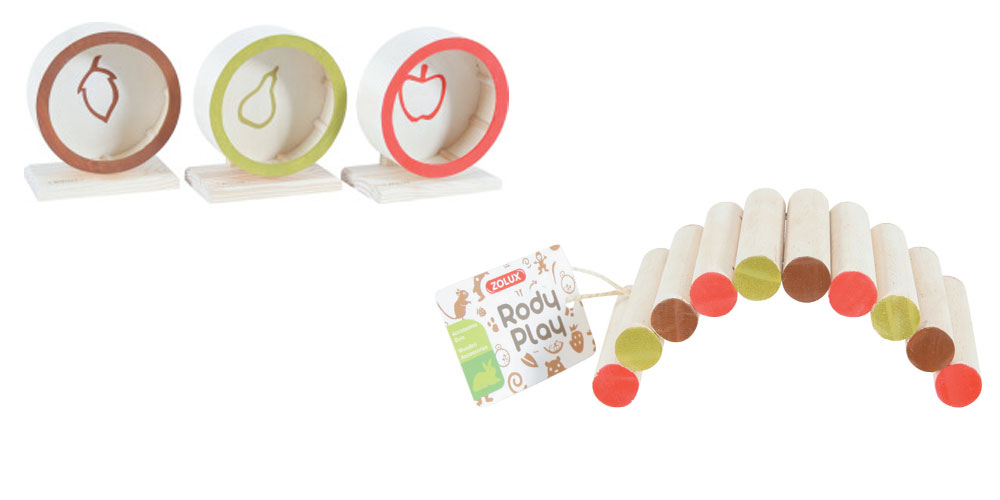
"RodyPlay" wooden wheel ref. 209 745 and "RodyPlay" wooden bridge ref. 209 740
Article written by Dr Valérie Crousse, veterinary surgeon

